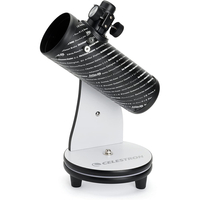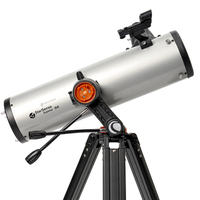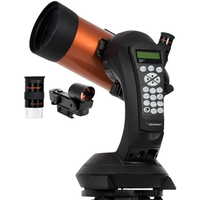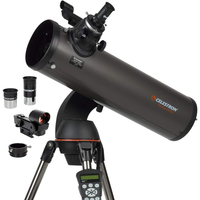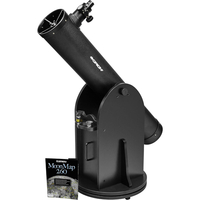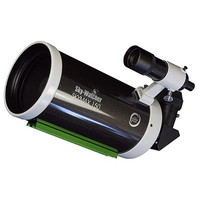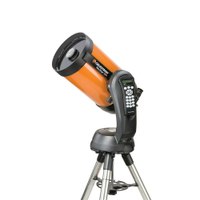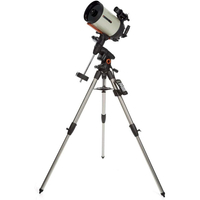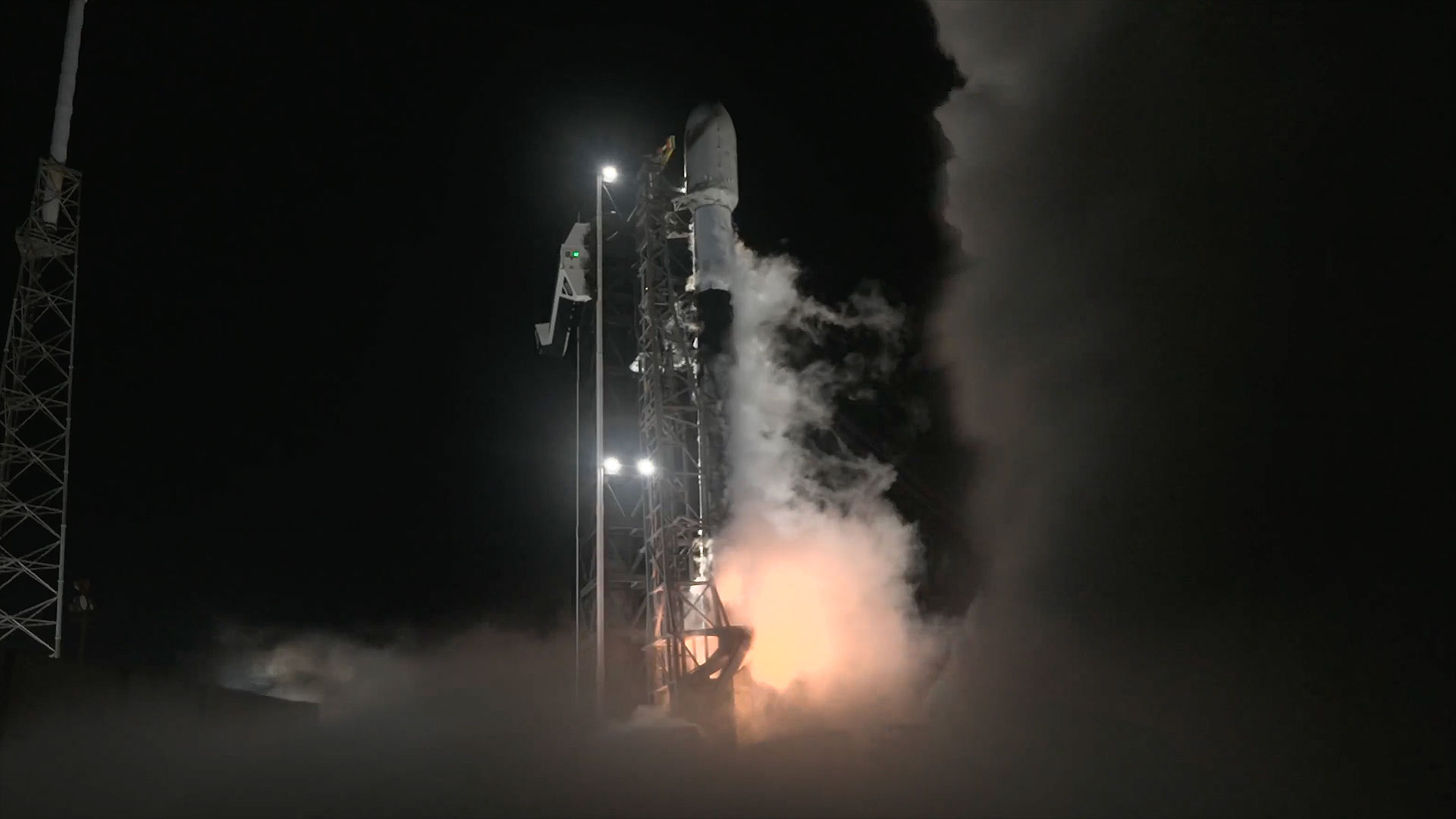Telescopes Christmas gift guide 2025: Best for all budgets
Searching for the best telescope to gift to the astronomer in your life this holiday season? Whether they’re a beginner or a seasoned astronomer, we have options for all budgets.
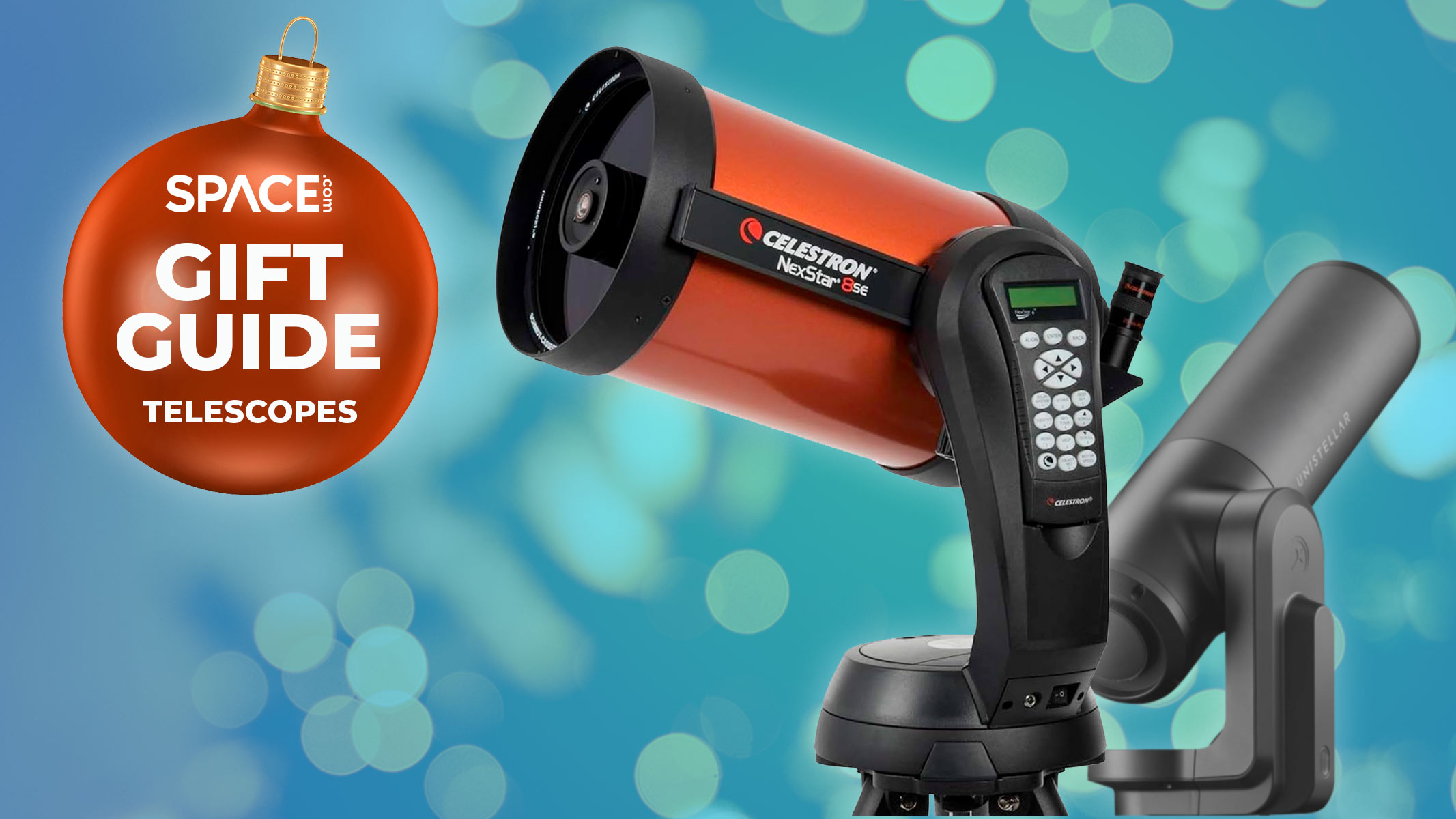
1. Telescopes for beginners
2. Telescopes for intermediates
3. Telescopes for advanced users
4. Christmas Gift Guide FAQ
With Christmas on our doorstep, many are rushing to buy those last-minute holiday gifts. If you’ve been tasked with buying a telescope for that special someone, there’s no doubt about it: selecting the right instrument for their experience level, let alone making sure that you choose a telescope that’s from a reputable dealer, can leave buyers with more questions than answers.
This guide aims to ensure that the telescope you choose meets the requirements of the astronomer in your life, with the instrument not being too difficult or simple to use while ensuring that the buyer — that’s you — doesn’t have to break the bank in order to tick a telescope off your list. We’ve also offered three price points, whatever the experience level of the astronomer: beginner, intermediate or advanced.
If you have time to do a bit more research and shopping around, then we recommend that you check out our guide to the best telescopes. On the other hand, if you’re wondering whether the recipient is truly ready for a telescope, or you have a tight budget, then you may find reading our binocular Christmas gift guide useful — it’s possible to open up the wonders of the night sky without spending a fortune.
Beginner
When choosing a telescope for a beginner, it is important to choose one that is a decent all-rounder — that is, an instrument that can show a variety of solar system and deep-sky targets. This ensures that novice astronomers aren't limited in their experience, and they’re able to take in a selection of night-sky wonders. When choosing a beginner’s telescope, you should pay close attention to its aperture (also known as the diameter of the objective lens); the larger it is, the more light the optical system will be able to gather, and the more detail the observer will be able to see.
When buying for a beginner, it is also important to consider the instrument’s portability as well as how easy it is to use and setup: The lighter it is, and the simpler it is to use and assemble the more likely your recipient will make the most of their gift — and of course, when the time comes, upgrade it with a wide selection of accessories to enhance their hobby.
The Celestron FirstScope 76 has been designed with the casual or young skywatcher in mind. It offers superb portability while still providing fair night-sky views despite its modest aperture of 76mm, and ticks all of the boxes on a novice astronomer’s wishlist when selecting their first telescope: zero setting up and all of the accessories you need for a fuss-free tour of the cosmos. This tabletop Dobsonian is great for small, but decent, views of the brighter planets and achieving magnified views of the rugged lunar surface, as mentioned in our full Celestron FirstScope 76 review.
Celestron StarSense Explorer DX 130AZ
You can make an extra saving on the Celestron StarSense Explorer DX 130AZ this holiday season. With an aperture of 130mm, this Newtonian reflector is ideal for not only observing the planets, but also a selection of bright galaxies, nebulas and star clusters — meaning that it will take a while for beginners to outgrow. What’s more, the setup is user-friendly, supporting fuss-free navigation of the night sky when paired with their smartphone via the free StarSense App. As with many beginner telescopes, the recipient can enjoy a selection of supplied accessories: a tripod, accessory tray, smartphone dock and 25mm and 10mm eyepieces.
Rated as one of our favorite telescopes for beginners, the Celestron NexStar 4SE is an excellent choice if you have a reasonable budget. We love that it is easy to set up and use thanks to a hand controller and Celestron’s SkyAlign technology, meaning that the user can spend more time observing their chosen targets. The build and optics exude high quality and, while only one Plossl eyepiece is supplied (4mm), this instrument is easy to accessorize to make the most of its lowest and highest useful magnifications (15x and 241x).
Intermediate
If your recipient is in-between levels, then they are likely to have worked out what they like observing the most — it could be the planets of our solar system, or perhaps they like to venture further afield to gaze at galaxies and nebulas. Perhaps they like to dabble in both. At this stage in their hobby, they may be looking for eyepieces or filters to add to their existing telescope to enhance their views or could have completely outgrown their existing setup.
If your budget doesn’t quite stretch to an intermediate telescope and you suspect that they haven’t quite finished exploring the universe with their current telescope, then our guide to the best eyepieces is a sensible option as a gift, while still expanding their horizons.
If you know they are ready for a brand new instrument, then make sure you’re armed with the answers to the following questions before making a purchase: What do they like observing the most? Do they travel to dark-sky sites or are they a backyard astronomer? Do they live in a light-polluted area? Are they keen to try out astrophotography?
These questions will help you to narrow down your search — and our best telescopes guide will help you to make a decision on the kind of instrument your skywatcher will benefit from.
Often featured in our deals pages as a must-have for skywatchers, the Celestron NexStar 130SLT is ideal for intermediate astronomers who would rather make use of a computerized system to do the navigation for them. The NexStar 130SLT boasts high-quality workmanship, with its high-quality optics, sturdy single fork arm mount and tripod, and includes a selection of accessories (of note is an accessory tray, eyepieces, NexStar+ hand control, StarPointer red dot finderscope and star diagonal). What’s more, this telescope is portable for trips to dark-sky sites and has plenty of opportunity to upgrade its optical prowess.
This Dobsonian is a great portable option for intermediate astronomers who are after an instrument that offers bright, detailed views of a wide selection of targets, including Saturn’s rings, Jupiter’s turbulent atmosphere and Jovian moons, the rugged lunar surface, bright star clusters and dazzling nebulas. The Orion SkyScanner BL 135mm also comes fully equipped in the way of accessories: good quality 25mm Kellner and 10mm Plossl eyepieces, a 3x Barlow lens, red dot LED finder scope and Orion’s MoonMap 260 guide.
The Unistellar eQuinox 2 is suitable for beginners, however, you will need a high budget to purchase this incredibly sleek, all-in-one telescope. The eQuinox 2 doesn’t require any accessories, and fares well under moderately light-polluted skies thanks to its Smart Light Pollution Reduction feature. This high-tech instrument is also easy to set up and makes navigation a breeze, leaving the observer to take in planets, galaxies, nebulas and star clusters within moments.
Advanced
Perhaps the most difficult skywatcher to buy for, given their wide knowledge of the night sky and telescopes, seasoned astronomers may have hinted at what they’d like for Christmas to further deepen their hobby. If not, and you’re still drawing a blank on what to give them, eyepieces, filters or books may be right up their street.
If, however, your budget stretches to a new telescope (and they are ready to move on from their current kit), make sure that you’re armed with the correct knowledge before making a purchase. You should have a clear idea of where they are in their hobby and what they like observing the most — as well as where they want to be in their hobby over the next few years.
If your seasoned astronomer is ready to move onto the next level in their skywatching hobby — and astrophotography — the Sky-Watcher Skymax 150 PRO is a worthy contender, especially if the solar system is where their target of choice lives, while occasionally venturing into deep space. The Skymax 150's optics are impressive, delivering crisp, distortion-free views. It's a versatile telescope that’s easy to accessorize.
The larger relative of the Celestron NexStar 4SE, the Celestron NexStar 8SE is universally loved by all level of astronomer, thanks to its fuss-free calibration and navigation at the touch of a button. With its large aperture, seasoned astronomers will be delighted with what this Schmidt-Cassegrain has to offer: the ability to push its optical limits helped along with add-on accessories, capacity for deep-sky astrophotography and an aperture that collects enough light for observing a wide selection of night-sky targets.
Celestron Advanced VX 8 Edge HD
If your astronomer likes to dabble in a variety of observing targets, then the Celestron Advanced VX 8 Edge is ideal since it offers spectacular high-definition views of the solar system and deep-sky objects. It’s great for astrophotography, too, thanks to its outstanding optical performance and is light enough to transport to dark-sky sites. If you have the budget to spend, and the recipient knows the night sky and has been observing for a long time, then the Advanced VX 8 Edge is worth considering.
Telescope Holiday gift guide FAQ
How much should I pay for a decent telescope?
This depends on your budget, but a decent telescope — that has good optical quality, comes with a selection of accessories and will take a few years to outgrow — will cost at least $200 - $250 MSRP (manufacturer's suggested retail price). When choosing a telescope, the trick is to do your research, whether that involves reading up our guides on Space.com, or getting some advice from a seasoned amateur astronomer at your local astronomical society before making a purchase. Additionally, it is also essential that you shop around to compare prices, making sure that there is a satisfactory trade-off between how much you can afford and what your potential piece of equipment can actually offer in terms of observational performance.
Where first-time buyers often get lost is not being able to figure out what they should be looking for in an ideal piece of equipment, by thinking that bigger and more expensive is better. This is not always the case — it is always down to the individual and a telescope that allows you to do what they want – and nothing else - at a reasonable cost is definitely a step in the right direction.
Is a telescope a good gift for kids?
Yes — telescopes are a great gift for kids, but it’s important to be mindful of how much you spend on an instrument for a youngster, especially if you suspect that they could become bored with skywatching within the space of a year.
Luckily there are telescopes that cost below the $100 mark — often taking the form of 'desktop' scopes — that are relatively robust, require no setting up and tick all of the boxes for an entry-level instrument for kids. These sturdy pieces of kit will allow them to see the Moon closely, the stars as well as some of the planets. What’s more, they can just sit on the window ledge, doubling up as an ornament that can easily be packed away and stored. They also come with a selection of eyepieces and a filter or two. If nothing takes your fancy above, you can check out our best telescopes for kids guide for some recommendations.
What makes a good telescope?
Telescopes that come as a complete package — and which include a tripod, star diagonal, finderscope and an eyepiece or two — are a great starting point, ensuring that you get more bang for your buck.
Additionally, the greater the aperture, the better — this is the diameter of your objective lens — and the bigger it is, the more light the optical system will be able to collect for brighter, more detailed images. A good focal length is also important, depending on what kind of targets you want to view: choose a long focal length for high-power targets such as the Moon and planets, and a short focal length for taking in larger areas of sky occupied by galaxies and nebulas.
Last, but not least, a good telescope is one that suits the needs of the observer — whether it’s easy to set up, has an advanced mount, is portable or allows you to dabble in astrophotography!
Which telescopes should I avoid?
You should avoid telescopes that boast high magnifications for very little cost — if it sounds too good to be true, then it most likely is. If you’re able to see the telescope “in person” before making the purchase, then all the better: instruments that have a cheap, flimsy, build, have a finderscope that has a tube barely thicker than your finger or gives a fuzzy view, and comes with eyepieces with barrels that are less than one-and-a-quarter inches, should be avoided.
If you find that the telescope looks particularly difficult to set up or cumbersome to carry, then we recommend bypassing these instruments until your recipient is ready for their skywatching journey.
Join our Space Forums to keep talking space on the latest missions, night sky and more! And if you have a news tip, correction or comment, let us know at: community@space.com.
Breaking space news, the latest updates on rocket launches, skywatching events and more!

Gemma currently works for the European Space Agency on content, communications and outreach, and was formerly the content director of Space.com, Live Science, science and space magazines How It Works and All About Space, history magazines All About History and History of War as well as Science, Technology, Engineering, Arts and Mathematics (STEAM) kids education brand Future Genius. She is the author of several books including "Quantum Physics in Minutes", "Haynes Owners’ Workshop Manual to the Large Hadron Collider" and "Haynes Owners’ Workshop Manual to the Milky Way". She holds a degree in physical sciences, a Master’s in astrophysics and a PhD in computational astrophysics. She was elected as a fellow of the Royal Astronomical Society in 2011. Previously, she worked for Nature's journal, Scientific Reports, and created scientific industry reports for the Institute of Physics and the British Antarctic Survey. She has covered stories and features for publications such as Physics World, Astronomy Now and Astrobiology Magazine.
